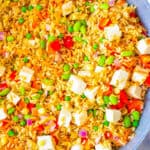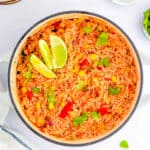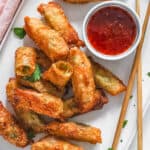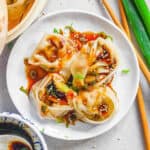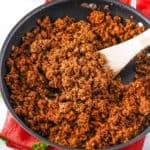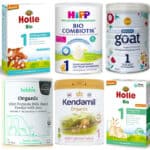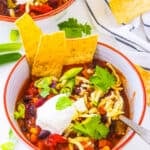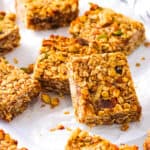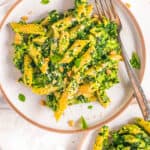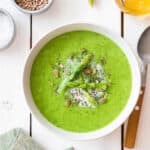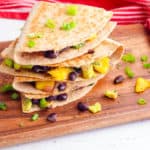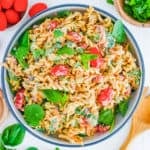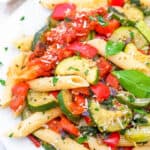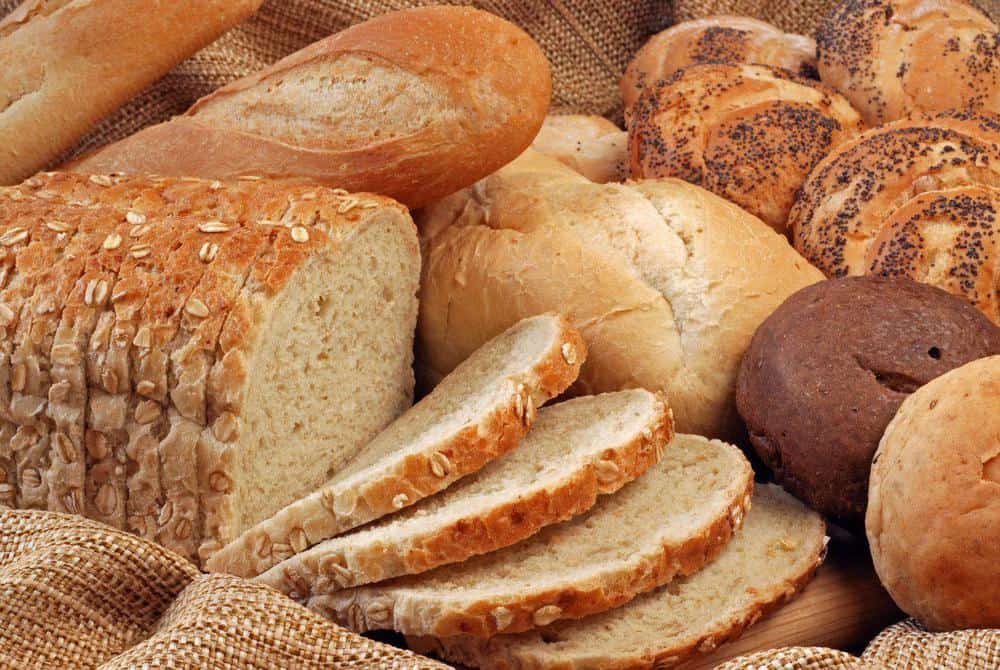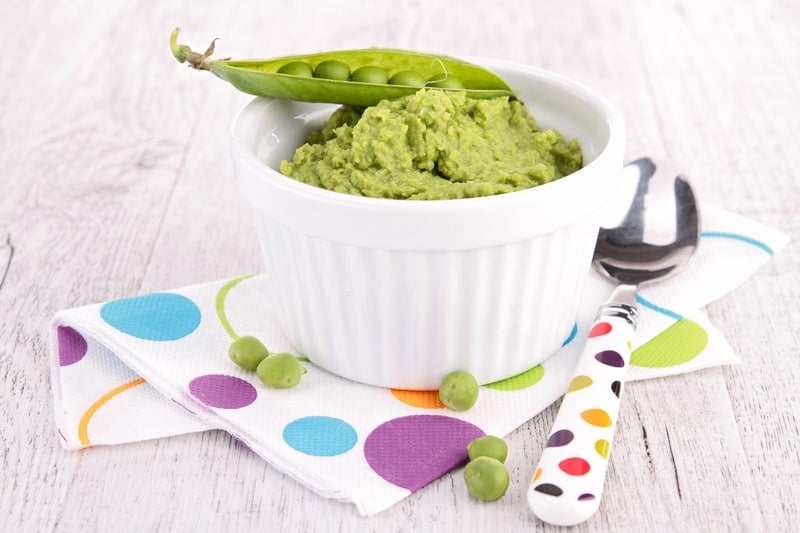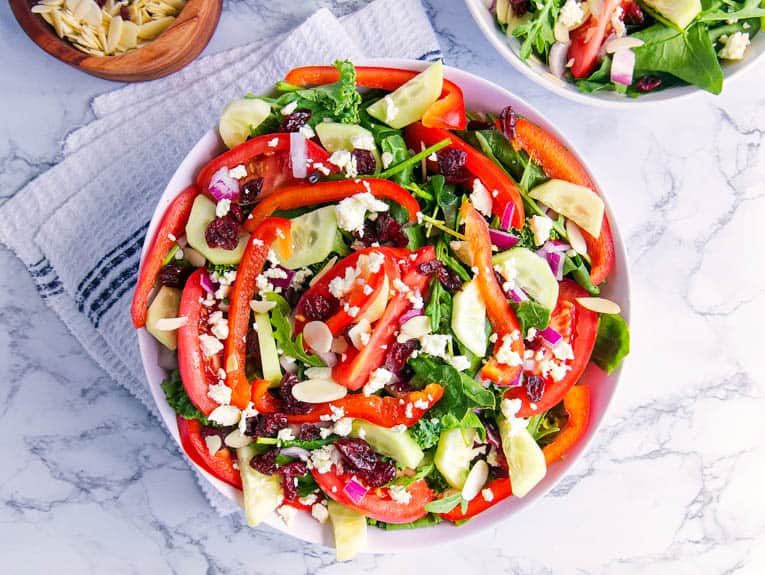Is Rice A Vegetable?
This post may contain affiliate links. As an Amazon Associate, I earn from qualifying purchases. Please read my disclosure.There is no doubt that rice has become a staple food in many of our daily diets. It’s so versatile and goes well with all kinds of cuisines. If you eat rice regularly, you might be wondering: is rice a vegetable? Read on to find out whether rice is a vegetable, grain, seed, or fruit, whether it’s healthy, vegan, vegetarian or gluten-free, and learn everything you wanted to know about all the different types of rice!
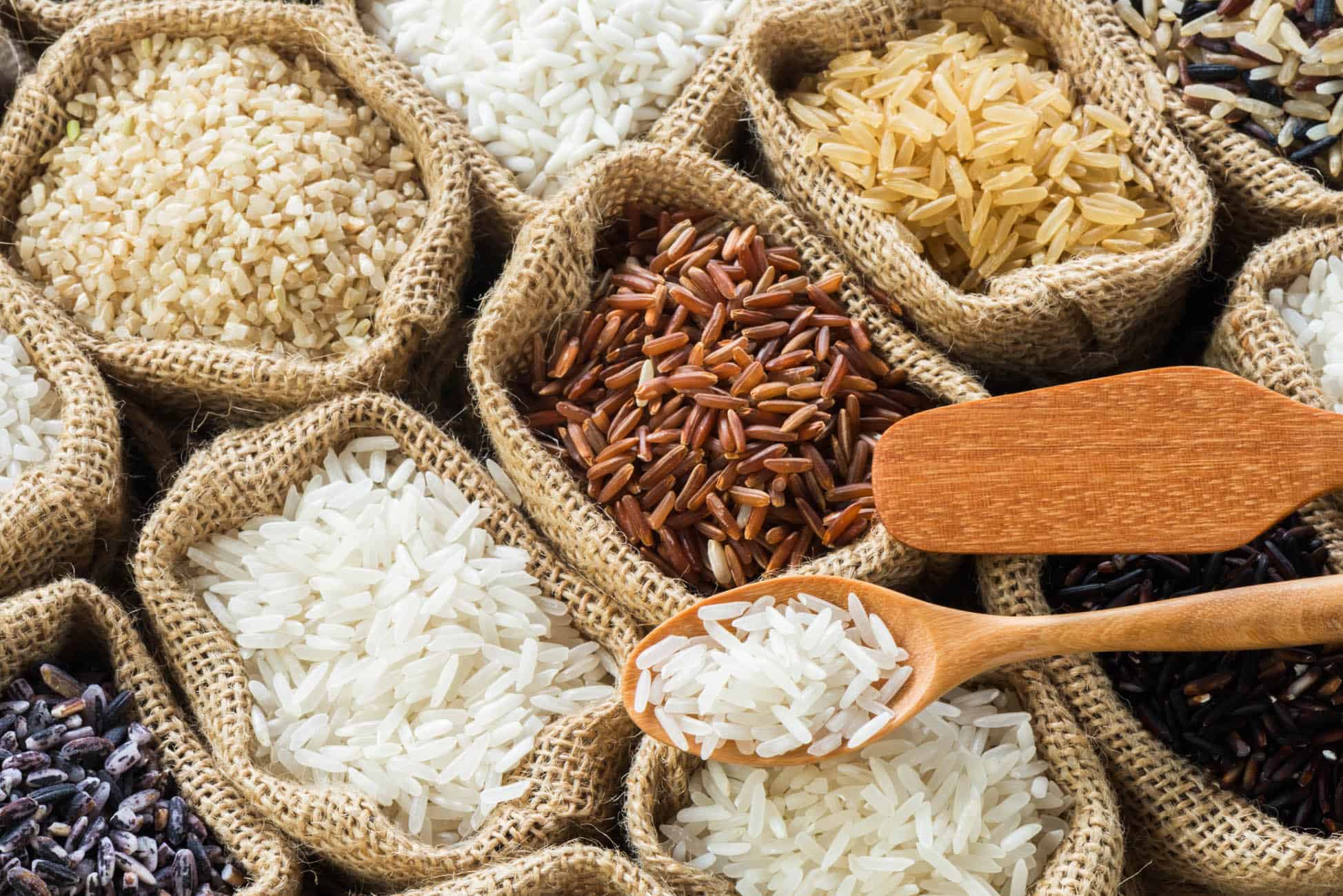
According to Britannica, rice is a staple in about one-half of the world, including virtually all of East and Southeast Asia. Of course, it’s not hard to imagine why. I love serving rice with everything from tacos to stir-fries and even salads (like this tomato avocado cucumber salad)!.
However, with so many of us eating rice on a regular basis, it’s easy to wonder what it actually is. Is rice a grain? Is rice a vegetable? If you’ve ever wondered that before, then you’ve come to the right place. In this guide to rice, I’ll be covering all the questions you have ever had about the grain. Let’s dive right in!
What Is Rice?
In short, rice is a type of grain. To be super specific, it is the small edible seeds of the grass-like plant Oryza Sativa. Just like other grasses, Oryza Sativa has flowers that are pollinated by the wind. Once pollinated, those flowers produce fruit (or seeds). That fruit gets harvested and —voila!— rice is born. In other words: rice is the edible grain (aka seed) that is produced by harvesting the fruit of grass plants.
How Is It Grown?
Rice loves wet places, so it is grown in paddies (level, flooded fields) that are located in warm, tropical, and aquatic environments (think: wetlands and flood plains). While most of these grain crops are cultivated in Asia, there are some rice farms located in the United States.
Contrary to what some might think, growing and harvesting rice is a lot of work! Once the rice is planted in rice paddies, it takes anywhere from 3-6 months before its moisture content becomes fit for harvesting. When it comes time to harvest, farmers will drain the paddies, cut the rice plants, and dry them out.
Once dry, the rice plants are threshed, meaning the rice grain is separated from the stalk. After threshing, the grains of rice are re-dried, and then they are milled. The milling process consists of removing the husk, bran layer, and germ, which produces what we recognize as white rice. Brown rice —as you might have already guessed— isn’t milled.
What Are Vegetables?
According to Merriam-Webster, the definition of a vegetable is “a usually herbaceous plant (such as the cabbage, bean, or potato) grown for an edible part that is usually eaten as part of a meal.” By including any edible part of a plant, this definition considers rice to be a vegetable (alongside mangoes, papyrus seeds, and things of that nature). However, the culinary world hasn’t quite adopted the same idea.
What Are The Different Types Of Vegetables?
Cereal grains, types of fruit, and certain proteins are also technically the edible parts of plants, yet we don’t consider them vegetables. Therefore, I think it’s safe to say we need to be a tad more specific about how we classify our veggies.
The U.S. Department of Agriculture classifies vegetables into 5 subcategories: starchy vegetables, dark green vegetables, beans and peas, red and orange vegetables, and other vegetables. All various vegetables include things like sweet potatoes, red bell pepper, spinach, corn, onions, broccoli, and so many others.
Is Rice A Vegetable?
No, rice is not a vegetable. Now, following the Merriam-Webster definition, rice would technically be considered a vegetable. However, according to the U.S. government’s classification, rice is not a vegetable because it doesn’t fit into any of the 5 categories. So where does that leave us? Although it is plant-based, delicious, and oh-so-satisfying, rice will not qualify as your daily dose of veggies. From a culinary standpoint, rice falls under the grain group in the food pyramid.
Is Rice A Fruit?
If rice isn’t a vegetable, could it be a type of fruit? According to Britannica, a fruit is the fleshy or dry, ripened ovary of a flowering plant that encloses the seed or seeds. A lot of people also associate fruits with having a juicy and sweet flavor.
While rice is technically derived from the ovary of a flower, it isn’t at all sweet or juicy. Now, onto the question of seeds. To be ultra-biological, rice falls under a category of fruits known as caryopses.
Caryopses don’t have that fleshy exterior that we commonly associate with peaches and oranges, but instead, they have a thin fruit wall that is fused with the seed coat. (Think of the seed being the fruit.) Following this perspective, rice technically could be classified as a botanical fruit. However, so could almost anything!
Is Rice A Grain?
Ding! Ding! Ding! Yes, rice is a grain! More specifically, rice is classified as a grain type. And while “grain” isn’t exactly a botanical classification, it is the best way to describe plants that have caryopsis fruits. Aside from rice, the grain group includes all kinds of harvested seeds of certain types of grass, including oats, wheat, and barley.
Is Rice A Seed?
Yes, right again, rice is a seed! As I mentioned, each grain of rice is a small, edible seed that is cultivated from grass-like plants. Other kinds of seeds include quinoa, pine nuts, flax seeds, pumpkin seeds, and more.
What Are The Different Types Of Rice?
As you probably know, there are seemingly endless kinds of rice. However, they all fall neatly within three main categories: long-grain rice, short-grain rice, and medium-grain rice. Long-grain rice has a length that is 3-5 times its width (hence the name), and it includes basmati and jasmine rice. While different kinds of long grain rice vary in texture and aroma, they all have a relatively low starch content.
On the flip side, short grain rice is an incredibly starchy food. It is chubby, round, and sticky, and a lot of the time you can find short-grain rice smothered in soy sauce and being handled with chopsticks. It is the kind of rice that is found in sushi or Spanish paella. Medium-grain rice falls somewhere in the middle. It is a lot shorter and moister than long-grain rice, but it’s not quite as starchy as short-grain rice. Medium-grain rice is the kind of rice that is used for risotto, or for “table rice” in places like China, Korea, and Japan.
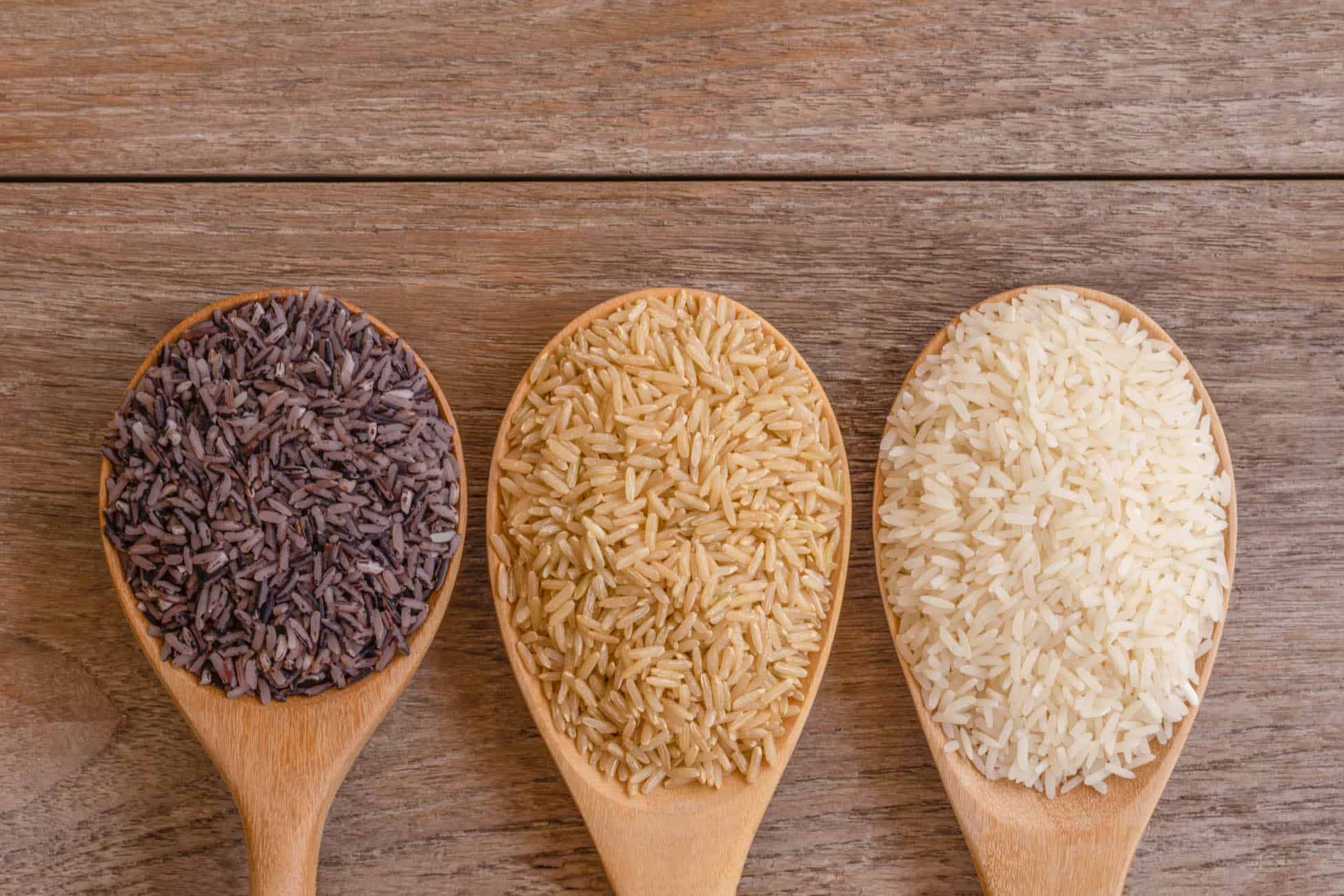
Is Rice Vegetarian? Vegan? Gluten-Free?
Now I know vegan-based dieters are probably wondering whether or not rice is vegan. (And the same probably goes for vegetarian and gluten-free dieters as well, right?) Well, the short and sweet answer is yes! Rice is vegetarian and vegan. As I mentioned, rice is harvested from grass-like plants (not living creatures), and it doesn’t use any animal products. Therefore, all types of rice are both vegetarian and vegan-friendly.
Regarding rice’s gluten-free status, you might be happy to hear that the answer is also yes! Rice is one of the most popular grains for people with celiac disease or gluten-free diets. And yes, this goes for all types of rice (black rice, organic brown rice, whole grain rice, sticky rice, jasmine rice — the works).
If you’re gluten-free, the only thing you should be cautious of when buying rice is purchasing flavored or spiced rice. For example, rice pilaf sounds like it’s safe, but it is made with orzo, which is a pasta group that is not gluten-free! To stay on the safe side, I always recommend opting for plain rice and seasoning it at home.
Is Rice Healthy? Is Brown Rice Healthier Than White Rice?
If you’re wondering if rice is healthy, remember that grains are on the food pyramid for a reason! Rice is a phenomenal source of carbohydrates, which are our bodies’ main energy source. Therefore, it’s important to get our daily value of grains to stay fueled and satisfied.
When determining which kind of rice is healthiest, brown rice is definitely healthier than white rice. Because it doesn’t go through the milling process, brown rice is full of essential vitamins and nutrients including fiber, manganese, and B vitamins.
A lot of folks believe white rice is an “empty” or “bad” carb because it loses its nutritional elements in the milling process. This is mostly true, but it’s worth noting that, white rice is enriched with nutrients to replace what was lost. However, white rice is higher on the glycemic index than brown rice, which means it will cause your blood sugar to spike more quickly and, due to the lack of fiber, won’t keep you full as long as brown rice.
Although some believe refined grains (white rice) are responsible for weight gain, the issue around weight gain and rice is more about potion sizes and frequency than the actual grain. As long as you follow general nutrition advice, monitor your serving size, and practice portion control, white rice isn’t going to be the reason you gain weight.
Is There Arsenic In Rice?
As you might know, arsenic is an incredibly toxic element that causes a number of health problems. Throughout history, arsenic has unfortunately been creeping its way into our food chain, and recently there have been studies showing high amounts of it in rice.
Should you be worried? Well, let’s see. Arsenic naturally occurs in water, soil, and rocks, so it makes sense how it accumulates in rice. Because rice paddies are submerged in water, it is common for arsenic to sneak into the groundwater and soil. Therefore, it is safe to assume that most rice has trace amounts of arsenic in it.
To combat the harmful health effects of arsenic (heart disease, high blood sugar levels, cancer, etc.), you should avoid eating large amounts of rice every day (enjoy it only as a side dish, for example) and vary your carb intake. Our bodies can handle low amounts of arsenic, but not high doses or long-term ingestion.
What Is Vegetable Rice? What Are The Different Kinds Of Vegetable Rice?
I’m sure by now you’ve probably heard of the cauliflower craze (and by craze I mean using cauliflower to make anything from pizza crusts to fried rice). And if you’re new to the cauliflower rice bandwagon, allow me to be the first to welcome you.
Cauliflower rice is a kind of vegetable rice, which is a category of finely chopped, raw veggies that resemble grains of rice. When properly riced, the vegetables mimic both rice’s appearance and texture, however, they still taste like regular old veggies.
Essentially, you can transform any vegetable into vegetable rice, although the best results come from cruciferous ones (cauliflower, broccoli, and Brussels sprouts). Ricing potatoes, squash, and medium carrots are also quite popular.
How To Make Vegetable Rice
Turning vegetables into rice is a lot easier than you might think! All you need is a cutting board, a good knife, and a food processor. Start by cutting your vegetable of choice into small chunks. (If you’re cutting up cauliflower or broccoli, know that you can rice the stems too!) From there, toss small amounts of your chopped veggies into a food processor. Then, simply process until they reach the consistency of rice.
You cook vegetable rice the same as you would regular veggies. I drizzle them with olive oil or sesame oil, sprinkle them with sea salt, and sautée them over medium to medium-high heat for 10-12 minutes. If you’re craving more of a kick, add some red pepper flakes as well.
How To Store Vegetable Rice
Vegetable rice is ultra-versatile, so it is a great dish to have on hand. You can use veggie rice in grain bowls, stir fry dishes, burrito bowls, and so much more! To store leftovers, seal it up in an airtight storage container or bag, and refrigerate. Most vegetable rice dishes have a shelf life — or should I say fridge life — of up to 4 days.
Note: If you need to store vegetable rice for longer, you can freeze it in an airtight container for up to 2 months.
Healthier Alternatives To Rice
If you’re looking to switch up your carb intake, here are a few healthier alternatives to rice that you can try:
- Quinoa. While quinoa has a grain-like taste and texture, it is a seed. It is also gluten-free and has significantly more protein than brown or white rice.
- Riced vegetables. Riced cauliflower or broccoli are great options for people following low-carb or low-calorie diets. Not only do they look and feel like rice, but riced vegetables are jam-packed with nutrients that will elevate any meal’s nutritional content. They’re also higher in fiber, lower in calories, and lower on the glycemic index than regular rice!
- Barley. Barley is a grain that has a similar texture to oats. It is chewier and earthier than rice, but it is also loaded with protein and fiber.
Rice-Based Recipes To Try!
Now with all this talk of rice, it’s about time we see it in action! Here are the most delicious rice-based recipes that you should try:
- Vegan Mexican Rice
- Tofu Fried Rice (Healthy, Vegan)
- Indian Stew with Rice and Lentils
- Healthy Indian Fried Rice or “Khichdi”
- Rice Cooker Recipes
- Vegetarian Stew Recipe with Beans and Rice
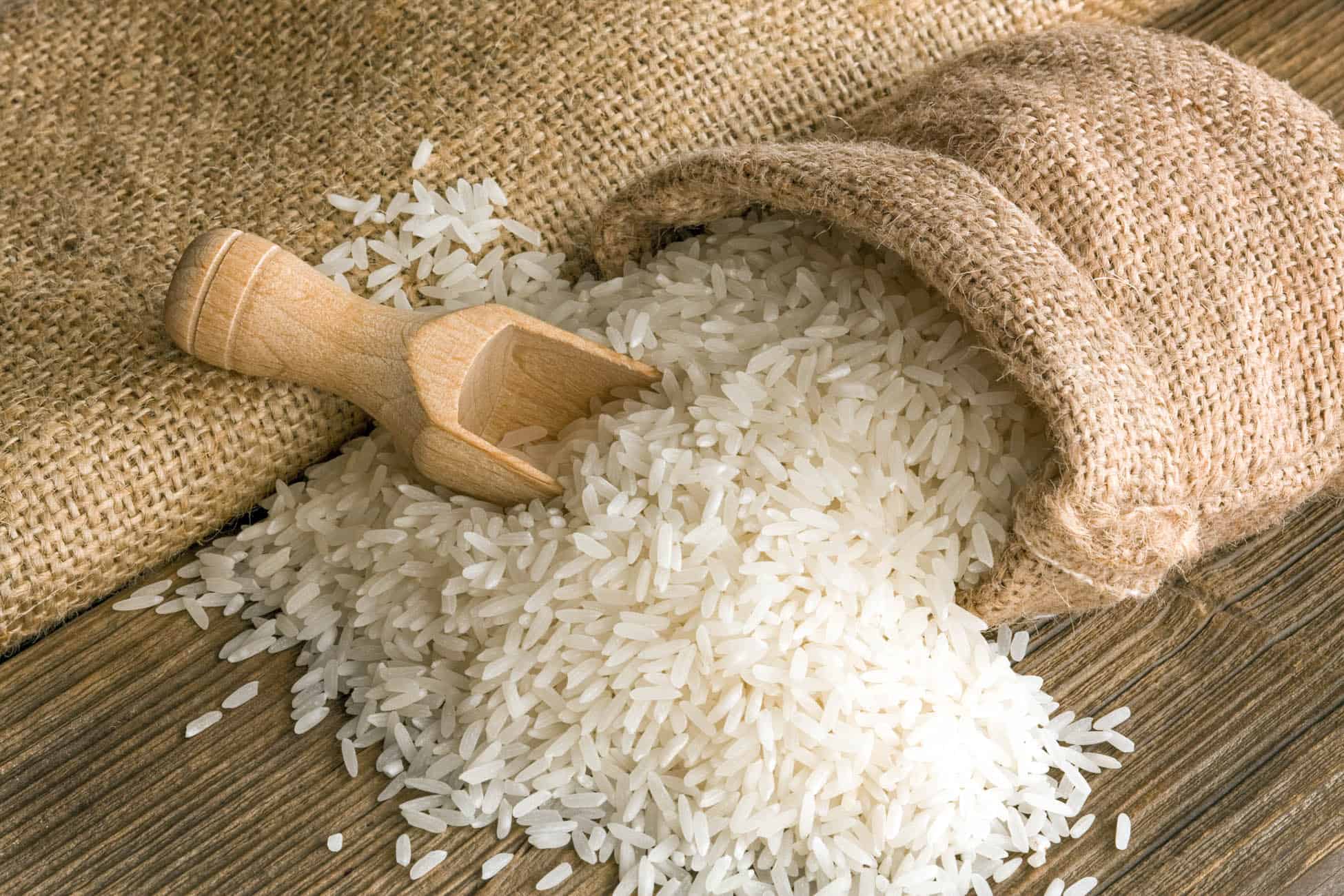
Final Thoughts
So, is rice a vegetable? Well, it’s complicated. Although this edible little grain technically complies with the definition of a vegetable, I think we can all agree that rice is far more of a seed and a grain than anything else.
Keep this article in mind the next time you’re making sushi, tacos, or a batch of fried rice. If you have any other food-related questions, let me know! I’d love nothing more than to hear from you. In the meantime, feel free to browse my blog for the answers to all of your food related questions!



